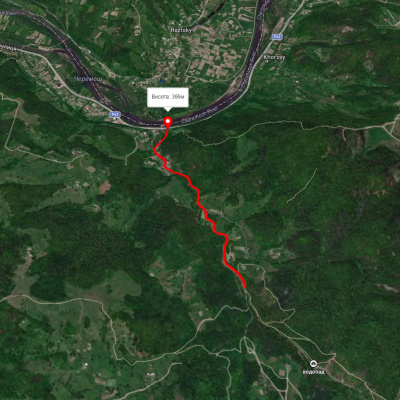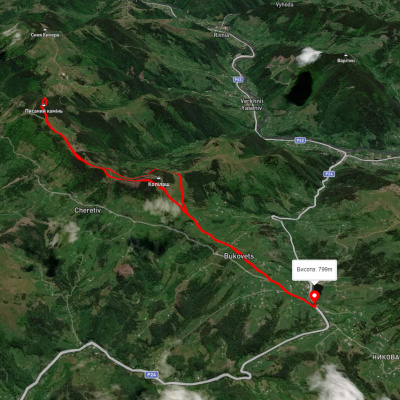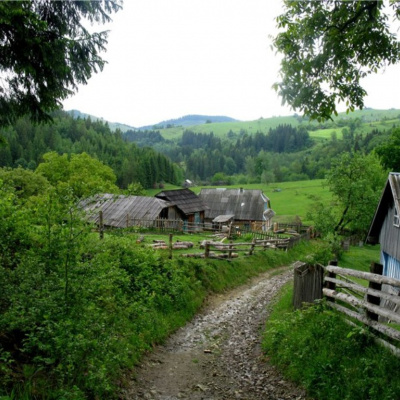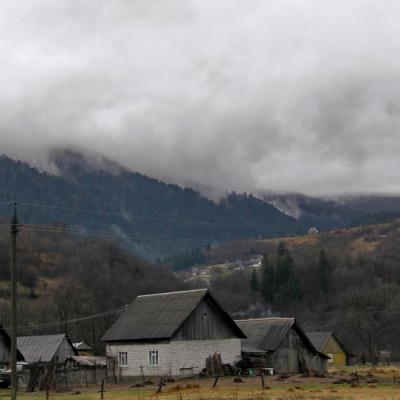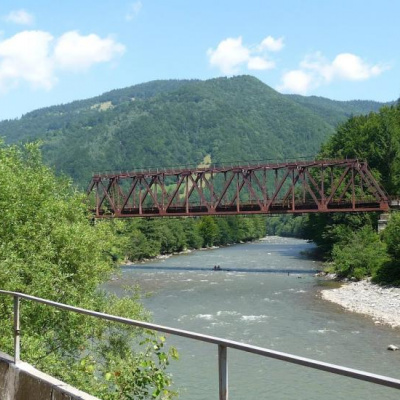Roztoky, a village in Ukraine, in the
Chernivtsi region,
Putyla district, can safely claim to be the cultural and creative center of the Bukovyna Carpathians, as there are more than enough reasons for this. The town is located along the Cheremosh River (with the streams Skakunets, Svidovets, Vrosoli) at a distance of 25 km from Kosiv and 15 km from the railway station Vyzhnytsia. The population is 2020 people. Not far from the village there are the famous Bukovynian waterfalls (up to 18 m high) and the Siruchok waterfall. The villagers are Ukrainians belonging to the Hutsul ethnic group.
It borders on the villages of Biloberzka, Yaseniv Horishnyi of Verkhovyna district; Velykyi Rozhyn, Yavoriv of Kosiv district, Roztoky of Putyla district of Chernivtsi region. The height of the central part is 400 m above sea level. Settlements: Selo, Opary, Luhy, Vology, Pidpasiki, Gubky, Pidstinky, Zapohar, Manivlogy, Rabynets. Tracts: Hlynyane, Prychivok, Chopahy.
In the Middle Ages, the territory where the village was founded was part of the ancient Russian state - Kyivan Rus, later the Galician-Volynian state. Since the end of the 14th century, Bukovyna has been under the rule of the Principality of Moldova. The first written mention of the village dates back to 1500. Since 1775, it was part of the Austrian monarchy, part of the imperial region of Bukovyna. Since November 28, 1918, the village, like the entire Bukovyna region, has been occupied by Romania. At the same time, from 1918 to 1939, the village was in the border zone of Romania and the Second Polish Republic, the border between which was the Cheremosh River.
Yuriy Fedkovych often visited Roztoky; it was the place of his educational activities. The poet worked here as a teacher and wrote a number of poems, one of which contains prophetic words about the united Ukraine. Roztoky was not without reason sung by Lesia Ukrainka. Going on vacation to Burkut in 1901, the poetess wrote the following in a letter to Olha Kobylianska: "Once we went to the high mountain of Nimchych and saw from here at sunset something as beautiful and silver as a dream - they say it is called Roztoky, but I think it has no name and that it is no longer there, because something like that can appear only once and disappear, and if someone wanted to see the same thing a second time, they would not find it."
After conquering Mount Elbrus in 1969, Volodymyr Ivasyuk returned to his homeland and traveled through the Carpathians. Mykhailo Ivasyuk, the composer's father, wrote in his book Monologue in the Face of His Son: "Volodymyr records folk songs. He visits the village of Chortoryia, stays with the extremely singing Mykolaychuk family. He is fascinated by the brothers of the famous film actor Ivan Mykolaychuk, and records many folk songs from them, which we often perform in the family. At the cost of any effort, he wants to find an interpretation of the poetic riddle of the red ruta that stuck in his heart..." A trip to the village of Roztok in July 1970 helped him to understand this riddle. The composer was traveling with the Viterets dance ensemble of the Chernivtsi Palace of Railwaymen. They were traveling for a reason, to film the movie "White Bird with a Black Mark".
Locals told Volodymyr Ivasyuk the legend of the red ruta, an amazing mountain potion. In Roztoky, "the final version of the text appears, which will be broadcast on September 13 on Ukrainian television in the program "Cameron of Good Mood". Apparently, Volodymyr took a good liking to Roztoky (a real pearl of the Carpathians!), because when in 1975 Viktor Storozhenko decided to make the movie Song is Always with Us, in which Sofia Rotaru performed six songs by Ivasyuk, Roztoky was chosen for filming."
In the center of the village stands a large wooden Assumption Church. The church was built back in 1846 for the Bukovyna Carpathians, almost in the prehistoric era. The color of the church is bright yellow, polished to a shine, and the entrance to the temple is exactly like the usual village verandas with glazed doors and a kind of scoop spirit. The temple is typical of the Putyla region: it is built on a stone foundation, has three log structures, and is three-domed. The tops are pyramidal and almost identical in height. The narthex and nave are rectangular in plan, and the apse has five sides. The tops were once covered with shingles - maybe now it is impossible to check, everything is under shiny tin.
To the northwest of the church stands the same yellow and large bell tower. It is made of wood, two octagons on a square. It has three tiers, and the top seems to copy the top of the church itself. Inside the bell tower is a mini-temple. Everything is clean and in towels. But this is not the most interesting thing about the church. It's not the well. And not the pears that fall to the church door.
The most interesting thing here is the plaque on the wall of the church that faces the road. This plaque, dedicated to the 50th anniversary of the reign of the Austro-Hungarian Emperor Franz Joseph, touched me with its boundless simplicity and naivety. Made at a time when illiteracy was widespread and grammatical errors were not considered a mortal sin, it pleases us, the computerized owners of dictionaries and diplomas.
There are many villages with this name in Ukraine. Roztoky in Bukovyna has a legend that explains the origin of the village's name. Maria Vlad, a native of Roztoky, tells the story: "One summer in the early fifteenth century, it was supposedly raining so hard that all the streams were overflowing. So much so that all the streams overflowed with water and began to flood the valley at the foot of the mountains. Residents were forced to move to the mountains for a while. And when the rains subsided and people returned home, they saw a miracle - the valley was divided in half by a small but turbulent river. People tried to walk across to their homes and asked:
- "Is it possible to cross (the river)?
- "Maybe, maybe!" the pioneers on the other side would say. That's how they named the transparent river Cheremosh. And the village cut in two by the river was called Roztoky. The Galician ones, my Roztoky, were on the left bank, and the Bukovynian ones were on the right. In the early 1900s, Lesia Ukrainka, traveling over Mount Nimchych by wagon to a water tank in the polonynian village of Burkut, stopped because of the fabulous view. She described seeing something so strange in the valley along the river, so silver, like a dream, like a fairy tale in a haze of apple blossom, with the domes of churches emerging... She was told that these were Roztoky. But the great Ukrainian poetess decided that this sight has no name, it is unique!"
Mountain Search and Rescue Service: Kosiv, 15a Nad Hukom Str. - +38 (03478) 2-16-77, +38 (067) 342-04-97, +38 (03433) 9-32-76, +38 (067) 348-79-15.
